(CNN) — One of the world’s highest capital cities, Bogotá is touted as “2,600 meters closer to the stars.”
While that elevation (8,530 feet) means you’re more likely to be shrouded in clouds than gazing at a starry night sky, when it comes to coffee and culture, the metropolitan city does not disappoint.
Here are some of the best ways to experience the city:
Botero and beyond
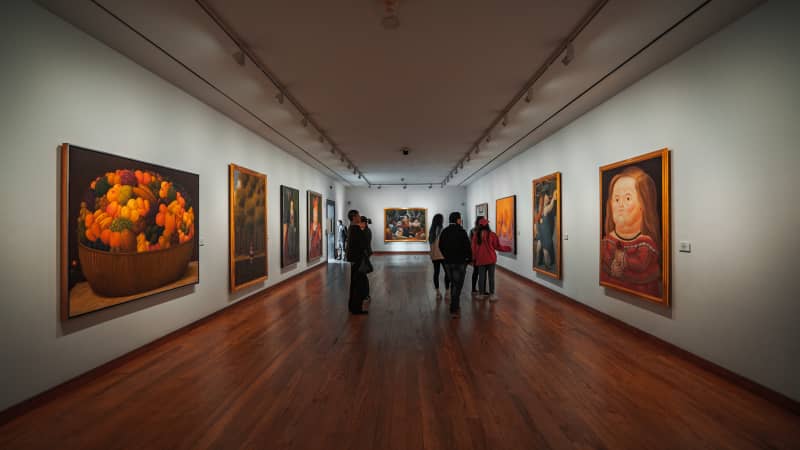
Museo Botero is dedicated to Fernando Botero, Colombia’s most famous artist.
Sebastian Barros Salamanca/VWPCS/AP
A look at the walls
Bogotá has a unique street art culture, which is as much a part of the city as the walls themselves. Local artists are allowed to take over sections of the city’s buildings, and the result is a colorful, engaging and conversation-sparking collection of murals.
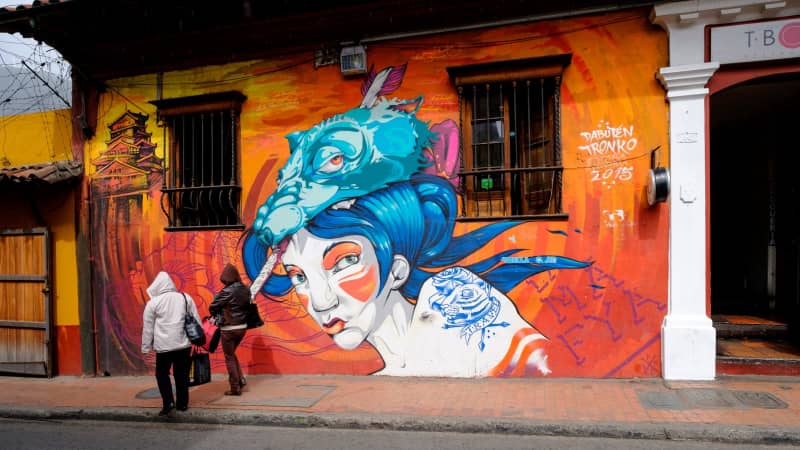
The Bogota Graffiti Tour is an intriguing way to discover the Colombian capital city.
Andia/Universal Images Group Editorial/Getty Images
Cultural deep-dives
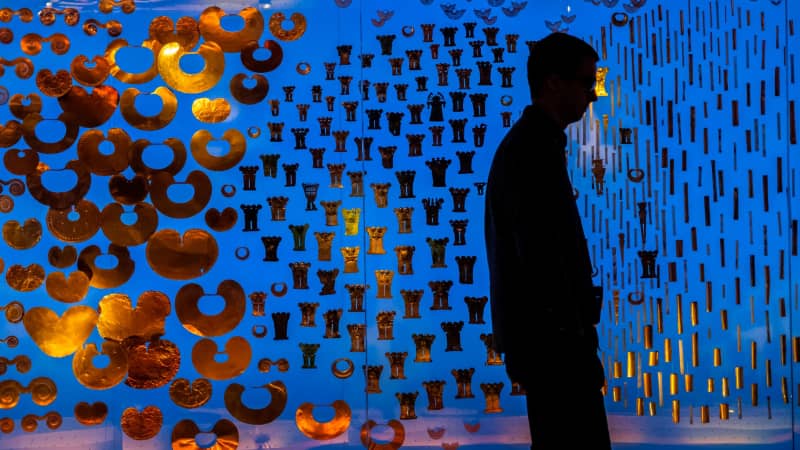
Museo del Oro houses more than 55,000 pieces of gold.
Lucas Vallecillos/VWPics/AP
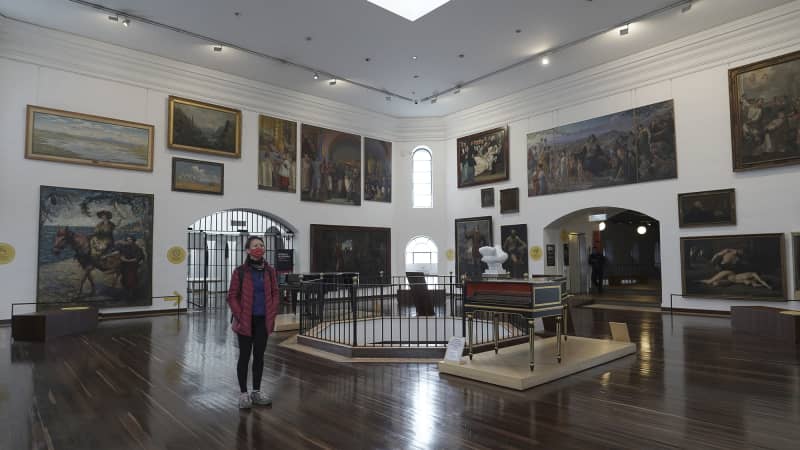
The National Museum of Colombia reopened to the public after four months in summer 2020, amid new pandemic safety measures.
Nathalia Angarita/Bloomberg/Getty Images
A cup of café
No Bogotá guide would be complete without mentioning coffee. Although the city isn’t located within the coffee triangle, the region famous for its coffee production, numerous coffee shops have sprung up in recent years now that the country isn’t exporting all of its best beans.
Historically, Colombians drank pasilla, the dregs of the coffee industry, which was brewed up into a wincingly strong tinto. Luckily things have since changed, and although you’ll see locals enjoying a cup of tinto from a street vendor, the good stuff is not to be missed.
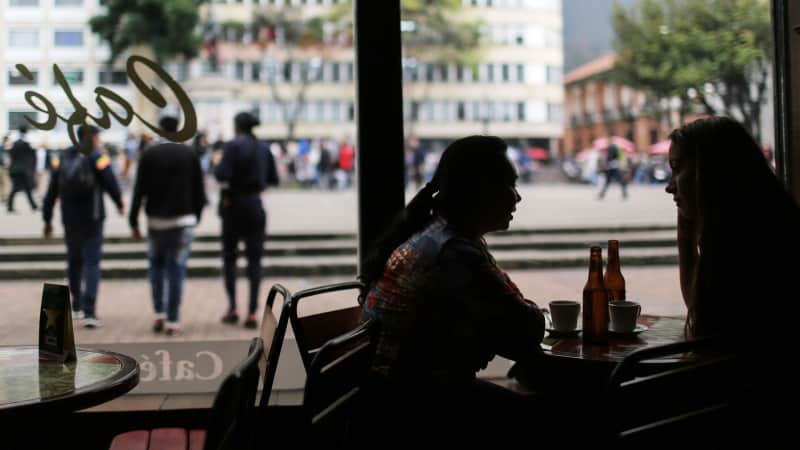
Numerous coffee shops have sprung up in recent years now that the country isn’t exporting all of its best beans.
Mario Tama/Getty Images
And those who would rather skip straight to the coffee are spoiled for choice.
A market for distinctive souvenirs
Worth the schlep north, Usaquén is a neighborhood that’s somehow both charmingly old fashioned and trendy, with a buzzing food scene.
But the best activity is the Sunday flea market, which is open from around 10 a.m. to 6 p.m. (give or take, after all this is Colombia). Usaquén market has endless local crafts, including pottery, soap, jewelry, shoes, deli items, and other handmade items.
Climbing for a view and searching for species
Another wonderful outdoor activity is visiting the Bogotá Botanical Garden, an oasis of calm amid the chaotic city. Colombia is one of the most biodiverse countries on the planet, and the gardens have an impressive selection of flora from the many ecosystems, with a particular emphasis on Andean and páramo species.
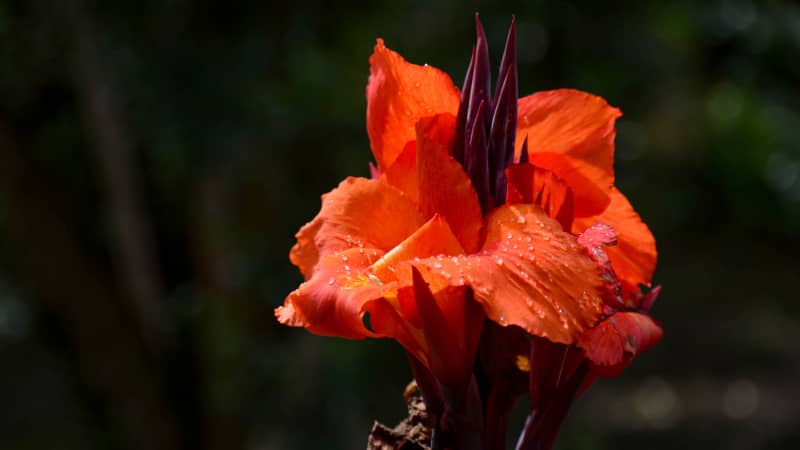
Bogotá Botanical Garden showcases the biodiversity that sets Colombia apart.
Vannessa Jimenez G/NurPhoto/AP
Flavors of Colombia
One of the best things about Bogotá is the burgeoning food scene, and the fact that visitors spending dollars enjoy a great exchange rate, meaning you can eat Michelin-star standard food that won’t break the bank.
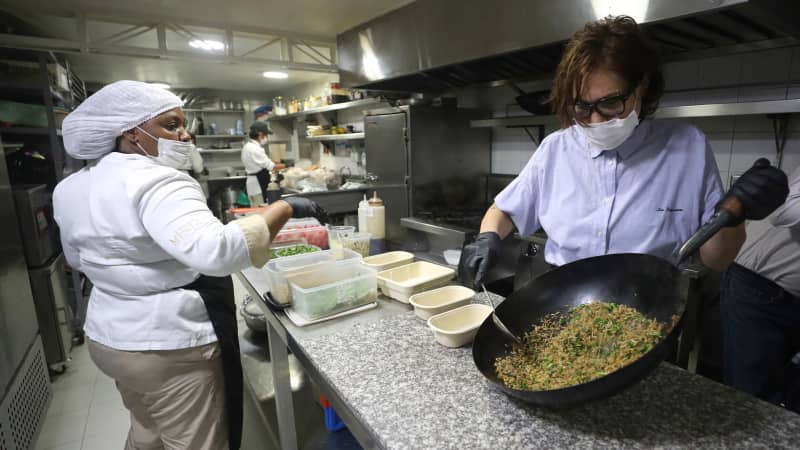
Chef Leonor Espinosa stirs a rice dish in the kitchen of her namesake restauranta LEO.
Fernando Vergara/AP
A more traditional, homespun experience can be found at La Puerta Falsa (False Door) restaurant in La Candelaria, where diners can slurp a bowl of warming ajiaco soup — made with three types of potatoes and chicken and served with avocado and rice — and finish up with a hot chocolate, of course dipping almojabana bread into it.
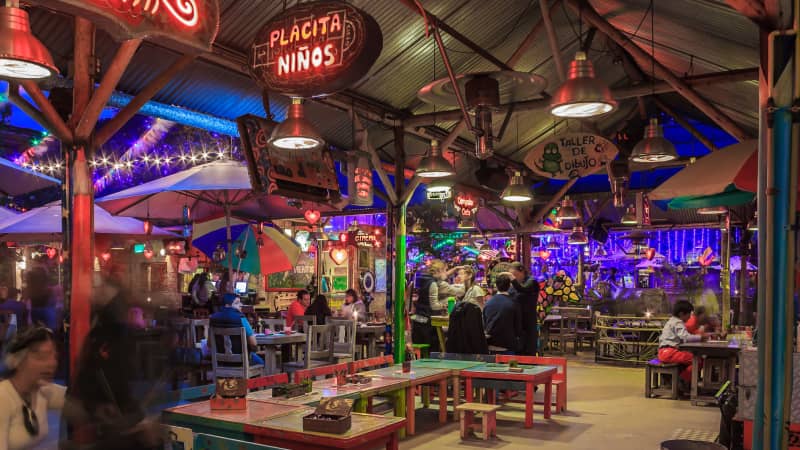
Andrés Carne de Res is one of the city’s most distincitive spots. The restaurant seats 2,000 people.
Genaro Palacios/VWPCS/AP
Much better suited to non-pandemic times, the gargantuan restaurant seats 2,000 people — and they still have to turn people away at their doors. The menus are 40 pages long, diners leave their tables halfway through the main course to salsa (there are five dance floors) and there’s also, for some reason, a 25-foot climbing wall.
Alongside the DJ there are multiple live bands on hand, as well as a few hammocks in the parking lot for anyone too tired to make the drive back to the city.
Lucy Sherriff is a freelance multimedia journalist based in Bogotá and covers environment, travel and gender issues.
